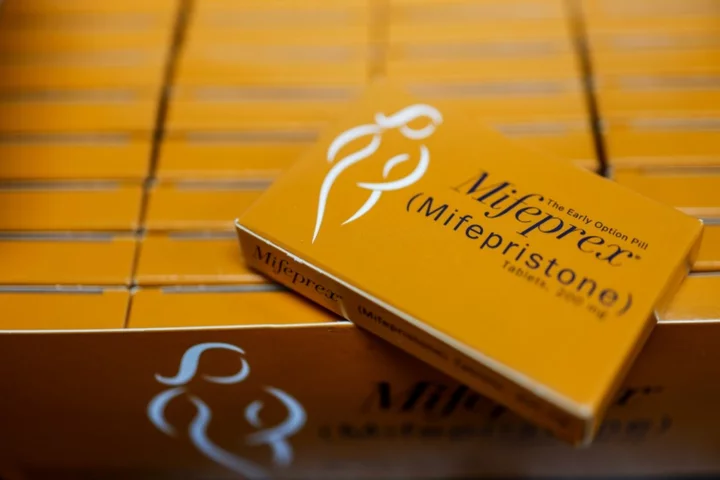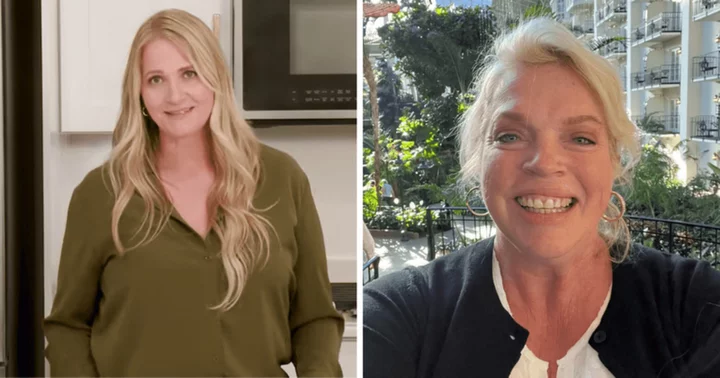
David and Victoria Beckham throw Prada party to celebrate Harper’s 12th birthday: ‘CHIC!’
David and Victoria Beckham have celebrated their daughter Harper’s 12th birthday a couple of days earlier with a party at the Prada Caffè in Harrods. The couple’s only daughter will turn a year older on Monday 10 July. She wore a silk lilac slip dress with lace trim from Victoria’s label, with sporty trainers and a sparkly £950 Prada Re-Edition handbag. The proud designer shared snaps from the party on her Instagram account, including a snap of her and Harper with their arms around one another, as well as the birthday girl with her famous footballer father and brothers Romeo and Cruz. Victoria wrote in the caption: “Harper Seven is 12!! (almost) Prada party for Harper Seven CHIC!” Harper was also pictured beaming with a large personalised cake in front of her, with 12 tall white candles waiting to be blown out. Fans praised Harper for her style and wished her a happy birthday. “You can just tell that she’s a genuine good kid! Happy birthday Harper!” one person wrote. Another said: “She’s so tall now! What a lovely young lady she’s become.” The luxurious Prada Caffè features pistachio-coloured walls and interiors, with black-and-white checkerboard floors and marble tables. The themed café opened in March and promises to bring a taste of Milan to Harrods. It comes after Victoria and David marked their 24th wedding anniversary last week with three of their four children. Their eldest son Brooklyn lives in the US with his wife, Nicola Peltz. The couple married on 4 July 1999 in a ceremony at Ireland’s Luttrellstown Castle. They paid tribute to one another on social media by posting throwback photographs of each other and sharing sweet messages. Victoria previously described Harper as her “number one muse” and has created designs especially for her. In January, she shared a mirror selfie of her and Harper, with the then-11-year-old in a strapless ombre gown and sneakers. She wrote: “Mummy loved creating this dress for you.” However, Harper doesn’t always share her former pop star mother’s sartorial tastes. Last year, Victoria revealed just what her daughter thought of the Spice Girls’ iconic miniskirts. Speaking to Vogue Australia, the Spice Girl formerly known as Posh Spice said her daughter is “not one of these kids who are going out with a full face of make-up and a crop top”. “She actually said to me recently, ‘Mummy, I’ve seen some pictures of you when you were in the Spice Girls and your skirts were just unacceptable. They were just too short,” Victoria recalled. “And she was actually quite disgusted at how short my skirts were. “I said, ‘Are you never going to wear skirts like that?’ She said, ‘Absolutely not’. We’ll see.” In the same interview Victoria revealed that she was concerned that Harper will be subjected to body shaming when she is old enough to use social media. She said that her daughter was not allowed on social media yet, but she was concerned about “how cruel people can be”. “She’s at that age where her body is going to start changing, but it’s about making sure that we communicate a lot as a family and she surrounds herself with nice friends,” Victoria said. “But it is quite terrifying, I can’t lie.” Read More Conflict, toxic group chats and organised fun: How we came to despise the hen do Woman exits plane after tirade about passenger who is ‘not real’: ‘Final Destination vibes’ Who is in the Royal Box on the sixth day of Wimbledon? David Beckham pays tribute to Victoria on 24th wedding anniversary Every Barbie-inspired outfit Margot Robbie has worn so far How to make your summer tan last longer
2023-07-08 23:23

US judges appear skeptical of preserving access to abortion pill
A US federal appeals court panel appeared skeptical on Wednesday of preserving access to a...
2023-05-18 06:28

Ford Will Let California Uber Drivers Rent Its Mustang Mach-E
Ford is making it easier for Uber drivers to rent its electric vehicles, as part
2023-06-04 07:57

Norse Atlantic Airways Celebrates Inaugural Service Between New York JFK and Rome
FORT LAUDERDALE, Fla.--(BUSINESS WIRE)--Jun 20, 2023--
2023-06-20 20:18

When will 'Cooking with Just Christine' Season 3 air? Christine Brown to be joined by 'Sister Wives' co-star and BFF Janelle on TLC show
'Cooking with Just Christine' Season 3 will also star Christine Brown's family members beside her BFF Janelle
2023-08-16 14:24

'The Witcher' Season 3's ball costumes are packed with hidden clues
The Witcher Season 3's standout episode of Volume 1 is one full of fabric, otherworldly
2023-07-03 20:19

No, SpaceX isn't responsible for the missing submersible's communication
There's a lot of speculation swirling around the internet about the missing Titanic-bound submersible. But
2023-06-22 00:51

A woman in Mexico City heals hummingbirds, and gets healing in return
Gently holding a baby hummingbird between her hands, Catia Lattouf says, “Hello, cute little guy
2023-08-09 02:50

The best Nintendo Switch deals ahead of Prime Day 2, from games to holiday bundles
There's a slew of Nintendo Switch deals up for grabs at major retailers ahead of
2023-10-07 19:55

France to ban wearing Islamic abayas in schools: minister
French authorities are to ban the wearing in school of abaya dresses worn by some Muslim women, the education minister said Sunday, arguing the garment violated...
2023-08-28 04:48

Supercharge your studies with a laptop primed for academic excellence
There’s a certain energy in the air during back-to-school season, and with motivation at an
2023-08-24 22:18

TikTok creators are suing Montana over the ban
Montana banned TikTok and creators within the state are fighting back. Last week, Montana Governor
2023-05-21 02:48
You Might Like...

The 32 Best Cotton Underwear For Down There

What to know about the Social Security cost-of-living adjustment

NYT's The Mini crossword answers for October 18

Mars spacecraft reveals violent event on biggest volcano in solar system

Nintendo Download: We Interrupt This Broadcast To Bring You…

US farmers, tech tycoons square off over plans for utopian city

I Lost My Ability To Run — & It Taught Me To Be More Patient With Myself

A lifetime license to MacX DVD Ripper Pro is on sale for under £25
